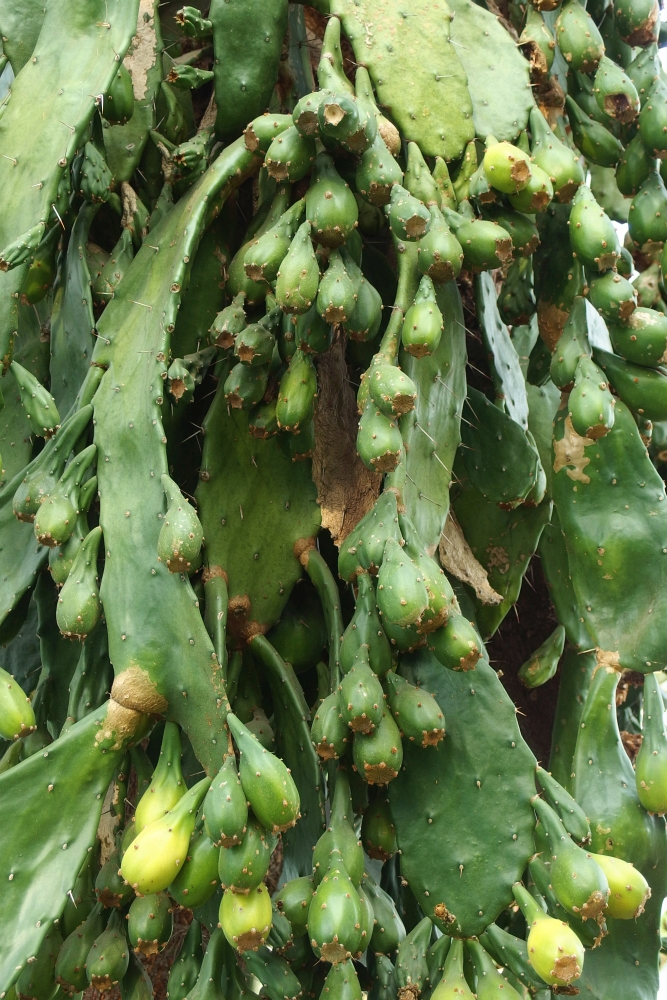Opuntia ficus-indica
English names: Barbary fig, Indian fig opuntia
Latin name: Opuntia ficus-indica
Family: Cactus - Cactaceae
Origin: Mexico
The leaves of this succulent, which grows as tall as 5 metres, have a waxy skin and spines that grow 1-2 cm. long, providing protection against animals. The flowers appear on the peak sections of the shoot. The fruit, ranging in colour from yellow through orange to red, is covered with small protusions. It produces a number of seeds.which are covered with fine bracts. The first fruits are round; later fruits are more elongated.
The barbary fig is cultivated in many countries with warm climates, including those in southern Europe. They adapt easily to various soil conditions. The Aztecs, who considered the plant sacred, used it for different purposes. The first fruit reached Europe probably at the end of the fifteenth century, with the return of Christopher Columbus from his expeditions; thus, to this day it is called ficus-indica (“Indian” fig).
The fruit is characterized by its sweet flavour, and its juices are consumed raw. It contains many ingredients, especially calcium, phosophorus and vitamin C, from which are produced juices, preserves and jellies. The young parts of the plant have medicinal uses, used in folk treatments as poultices. They are also used in the production of moisturizing creams, soaps and other cosmetics.



